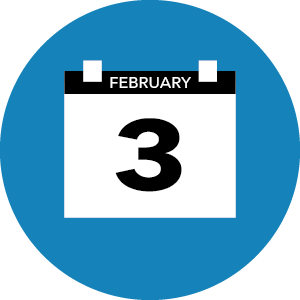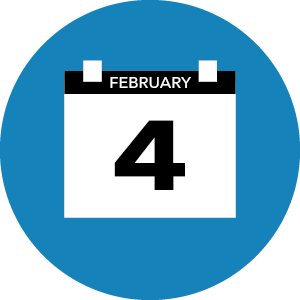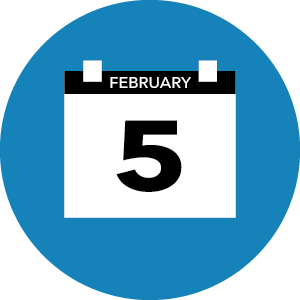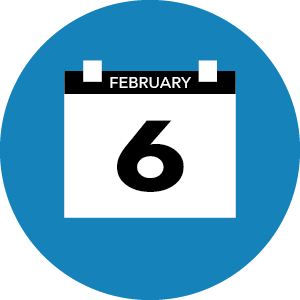Last updated: 2.2.2022 11:00.
All times are in Central European Time (CET).

Thursday

Friday

Saturday

Sunday
Thursday 3rd February 2022
15:30 | Coffee (+ Sandwiches)
16:15 | Welcome
16:30 | Dan Kilper (30m)
Driving Forces in Systems Research: from Optical Transmission to Quantum-Optical Transmisison
The early development of fiber optic transmission systems held many similarities to the situation today around the development of entanglement-based quantum communication networks. There were many technologies such as coherent transceivers, all-optical regenerators, and semiconductor optical amplifiers, that emerged as key technologies but, in the end, did not find commercial application, although coherent transceivers finally had their day roughly 20 years later, as several technologies matured. Once optical transmission settled on fiber amplified wavelength division multiplexed systems, research to maximize the bandwidth distance product created a technology race that led to more than five orders of magnitude of capacity growth over several decades. What are the prospects for finding a similar technology evolution in quantum communications that will drive quantum optical transmission systems research? Can it even happen for quantum systems and what can we learn from optical transmission systems?
17:00 | Start Poster Session
18:30 | Dinner
19:30 | After dinner Talk: Matthew Bloch (20m)
20:00 | Open Round
Friday 4th February 2022
QR.X Session
09:00 | Christoph Becher (30m)
Towards elementary quantum repeater links – an overview on the research network QR.X
A quantum repeater enables secure communication in quantum networks based on the distribution of entangled quantum states as a communication resource. In this context, only the concept of quantum repeaters allows for secure communication to be realized over several nodes and thus over arbitrary distances, without having to rely on reliable or secured classical nodes (trusted nodes). The realization of an infrastructure for quantum networks and hardware components for quantum nodes and repeaters is a technically challenging task. Nevertheless, it not only forms the basis for secure quantum communication, but at the same time offers opportunities for other quantum technologies, such as distributed quantum computing or networks of quantum sensors.
The German research network “Quantum Repeater Link – QR.X” investigates a bottom-up approach to realizing basic elements of fiber-based quantum repeaters (QR). QR.X employs three different hardware platforms to realize these elements, i.e. trapped neutral atoms and ions, semiconductor quantum dots and color centers in diamond and created a theoretical model to simulate their performance and guide further developments. The talk will present the basic concepts and an overview on recent experimental achievements in QR.X.
09:30 | Tim van Leent (30m)
Experimental device-independent quantum key distribution
Device-independent quantum key distribution (DIQKD) is the art of establishing secure keys over untrusted channels even when using untrusted devices. It allows the users to check the secure functioning of the underlying quantum devices by leveraging non-classical correlations between measurement results, thereby also ensuring security against implementation flaws—a major vulnerability to quantum key distribution protocols realized so far. Here we present the first experimental system that enables for DIQKD between two distant users. For this, we employ event-ready entanglement between two single-atom quantum memories, independently trapped and manipulated in buildings 400 metres apart. By achieving an entanglement fidelity of 0.892(19) and implementing a DIQKD protocol with random key basis we show that—based on asymptotic security estimates—our system can establish secure keys in a fully device-independent way.
10:15 | Coffee Break
10:35 | Jon Finley (45m)
Hardware for semiconductor-based quantum repeater technologies
Amongst the various hardware platforms explored within the QR.X project, semiconductor quantum dots (QDs) have favorable properties that make them suitable for building quantum links operating over optical fiber channels. They have near-unity quantum efficiencies, can emit near transform-limited single photons at rates approaching ~1GHz, exhibit high photon indistinguishability (>90% HOM) and can generate entangled photon pairs on demand. Their ability to natively emit in the telecoms O- and C-bands and the possibility to integrate them into advanced quantum photonic devices with photon extraction efficiencies >60%, make them highly attractive as quantum sources for field testing of repeater links.
11:20 | Alexander Kubanek (45m)
Towards Quantum Repeater based on SiV- -center in Diamond
Quantum-Repeater and their integration into a Quantum-Networks-Infrastructure is among the most important applications of the upcoming Quantum-Technology. In this talk, I will discuss our recent investigations on SiV- center in diamond towards application as Quantum Repeater. I will discuss main concepts and challenges and focus on the experimental realization of cavity-assisted Spin-Photon interfaces to realize an efficient and scalable platform.
12:05 | Peter van Loock (45m)
Analytical Quantum Repeater Modelling
We give an overview of our efforts to model quantum repeaters for long-range quantum key distribution or more general quantum network applications. Under given experimental assumptions such as the possibility of probabilistic or deterministic entanglement swapping we calculate and optimize the final (secret key) rates for medium-size repeaters including the most important experimental parameters.
13:00 | Lunch
14:00 | Christine Silberhorn (30m)
Quantum communication with nonlinear integrated optics and pulsed light
Photonic quantum information encoding is key for implementing quantum communication systems. The use of entanglement and non-classicality in high dimensional systems enable advanced system performance beyond standard qubit encoding. Yet, this required advanced setups, which poses considerable challenge on the technological implementation of useful systems. Our research focuses on the realization of novel non-linear integrated quantum devices with the combination of different functionalities and the control of the time-frequency structure of pulsed states of quantum light. Here we will review our latest progress of our work.
14:30 | Panel Discussion: Quantum Repeater (Becher, Silberhorn, van Loock) (45m)
15:15 | Coffee Break
15:35 | Lee Ray-Kuang [online] (15min)
Machine-learning enhanced quantum state tomography
By implementing machine learning architecture with a convolutional neural network, we illustrate a fast, robust, and precise quantum state tomography for continuous variables, through the experimentally measured data generated from squeezed vacuum states. With the help of machine learning-enhanced quantum state tomography, we also experimentally reconstructed the Wigner’s quantum phase current for the first time. Applications of squeezed states for the implementations of optical cat stats and fault-tolerant quantum computing will also be introduced. At the same time, as a collaborator for LIGO-Virgo-KAGRA gravitational wave network and Einstein Telescope, I will introduce our plan to inject this squeezed vacuum field into the advanced gravitational wave detectors.
15:50 | Alexander Streltsov (15min)
Catalytic Transformations of Pure Entangled States
Abstract: Quantum entanglement of pure states is usually quantified via the entanglement entropy, the von Neumann entropy of the reduced state. Entanglement entropy is closely related to entanglement distillation, a process for converting quantum states into singlets, which can then be used for various quantum technological tasks. The relation between entanglement entropy and entanglement distillation has been known only for the asymptotic setting, and the meaning of entanglement entropy in the single-copy regime has so far remained open. Here we close this gap by considering entanglement catalysis. We prove that entanglement entropy completely characterizes state transformations in the presence of entangled catalysts. Our results imply that entanglement entropy quantifies the amount of entanglement available in a bipartite pure state to be used for quantum information processing, giving asymptotic results an operational meaning also in the single-copy setup.
16:05 | Christian Kurtsiefer (15m)
Quantum communication in urban networks and single photon engineering
In this presentation, I will highlight two areas of research in the area of quantum optics at the Centre for Quantum Technologies in Singapore. On the more applied side, I will report on efforts on implementing entanglement-based quantum key distribution over a metropolitan fiber network [1], and a recent development of addressing physical vulnerabilities of quantum key distribution systems. On the more upstream side, I will present a technique to change the temporal shape of a single photon, a technique that may help to interface different physical qubits through optical photons in a quantum internet of heterogenous physical systems.
16:20 | Coffee Break
17:10 | Riccardo Bassoli [online] (15m)
Practical quantum networks for 6G: requirements and limitations - a theoretical perspective
In recent years quantum networks have attracted enormous interest due to their enticing promises such as distributed quantum computing, ultra-precise remote synchronization and distributed quantum sensing combined with inherent physically secure communication schemes. While these perspective use-cases and applications have been analyzed from a theoretical view point, the experimental realization of such systems remains a major challenge.
In order to tackle this challenge and realize first practical quantum networks a keen understanding of the current state-of-the-art, the required components as well as their limitations is fundamental. This essential background knowledge will inform current and future research foci of both theory and experiment and enable identification of possible alternatives to existing quantum network paradigms. An example for such an alternative approach are photon graph states – and in particular cluster states – which open up new possibilities for the realization of robust multi-partite entanglement distribution in future quantum networks. Recent experimental advances on photonic graph and cluster-states, high throughput entangled photon pair sources, memory-enhanced entanglement distribution and entanglement swapping bring the goal of practical realization of scalable quantum networks ever closer to reality and promise exciting new perspectives.
17:25 | Francisco Elohim Becerra [online] (15m)
Non-Gaussian optical measurements surpassing the quantum noise limit
Quantum state discrimination is a central problem in quantum measurement theory, with applications spanning from quantum communication to computation. Quantum mechanics allows for the realization of optimized measurements based on photon counting for the discrimination of nonorthogonal coherent states able to surpass the conventional limits of detection, such as the homodyne and heterodyne limits. Such measurements have a large potential for increasing sensitivities and information transfer in communications and for information processing. In this talk I will describe our current work in the problem of generalized measurements for coherent state discrimination. We implement an optimal inconclusive measurement for binary coherent states, a non-projective measurement that allows for achieving the lowest probability of error for a given rate of inconclusive results. This measurement encompasses standard measurement paradigms for state discrimination, specifically minimum error and unambiguous discrimination, and allows to transition between them in an optimal way.
17:40 | Panel on proper modelling (30m)
18:15 | Platform meetings (QR.X / 60m)
19:15 | Conference dinner
Saturday 5th February 2022
Industry and Field Trials
09:00 | Marc Geitz (20m)
The OpenQKD/QR.X Testbed in Berlin
The Berlin OpenQKD Testbed demonstrates the integration of QKD technology into a field installed network infrastructure using a PQC secured key management system and hybrid key exchange protocols to secure communication applications. Within QR.X, the testbed’s quantum layer will be enhanced to run entanglement based QKD, demonstrate entanglement swapping and a teleportation experiment under industry lab conditions.
09:20 | Sebastian Schaile (20m)
Compact Cooling Solution
The mission to enable scientific impact has kept attocube at the frontier of cutting edge research instrumentation. Decades of combined experience in all relevant fields, an excellent team, and close connections to leading universities worldwide have evolved into a portfolio of cryostats for the use in academic institutions. All systems are developed in accordance with attocube’s principles of compact design and precision, while new projects target even more compact and more autonomous designs to help the implementation of quantum technologies.
In this talk we give an overview on existing cooling solutions for applications with and without magnetic field as well as upcoming, revolutionary solutions for the use in the quantum industry. The core ingredient is a new compressor technology to strongly reduce current infrastructure requirements.
09:40 | Adrià Sansa Perna (20m)
Entanglement-based QKD, from Lab to Fab
Digital information is an inalienable resource, which drives business models and society. Quantum computers enable for new ways of data processing, optical fibers or satellite links connect continents and realize global networks. Security and sovereignty of information are granted today by complex mathematical algorithm-based cryptography. On the other hand, while the rise of quantum computers will allow for completely new ways of computing, it poses a threat to classical cryptography and leads to the key question: how to protect your data in times of quantum supremacy? The answer to this question will be given by quantum optics, which enables both the possibilities to create photonics-based quantum computer architectures, as well as unique systems for secure communication – based on the laws of physics.
The talk explains the realization of encrypted communication based on entangled photon pairs and how it will be possible to create a quantum-based internet in the future – from fiber connected systems to satellite networks.
10:00 | Bart van der Vecht (20m)
Application programming for the quantum internet
A quantum internet enables new types of applications, including quantum key distribution, blind quantum computing, and more. In order to program arbitrary such applications and actually run them on a real quantum internet, a software suite is needed that consists of a development kit and an execution stack. I will present NetQASM, a low-level instruction set format for hybrid classical-quantum network programs, and the NetQASM SDK, which enables programming quantum network applications in Python.
10:20 | Coffee Break
10:40 | Manfred Lochter (20m)
Quantum Key Distribution from a security perspective: developments and issues
The presentation will explain BSI's approach to quantum communication and discuss open questions. In addition, necessary standardization and certification processes will be outlined.
11:00 | Panel Discussion: Challenges in field trials, prototyping and product development (Lochter) (40m)
11:30 | Open Round (30m)
12:30 | End (45m)
13:00 | Lunch
Networks and Sensing
14:00 | Caspar Hopfmann (20m)
Practical quantum networks for 6G: requirements, limitations and perspectives – an experimentalist perspective
In recent years quantum networks have attracted enormous interest due to their enticing promises such as distributed quantum computing, ultra-precise remote synchronization and distributed quantum sensing combined with inherent physically secure communication schemes. While these perspective use-cases and applications have been analyzed from a theoretical view point, the experimental realization of such systems remains a major challenge.
In order to tackle this challenge and realize first practical quantum networks a keen understanding of the current state-of-the-art, the required components as well as their limitations is fundamental. This essential background knowledge will inform current and future research foci of both theory and experiment and enable identification of possible alternatives to existing quantum network paradigms. An example for such an alternative approach are photon graph states – and in particular cluster states – which open up new possibilities for the realization of robust multi-partite entanglement distribution in future quantum networks. Recent experimental advances on photonic graph and cluster-states, high throughput entangled photon pair sources, memory-enhanced entanglement distribution and entanglement swapping bring the goal of practical realization of scalable quantum networks ever closer to reality and promise exciting new perspectives.
14:20 | Wenhan Dai [online] (20m)
Entanglement Swapping Protocols for Quantum Networks
Distributing entanglement between distant nodes is an essential task in quantum networks. Protocols that schedule entanglement swapping operations can significantly affect the entanglement distribution rate. To maximize the entanglement distribution rate, we introduce the concept of e-nodes, representing the entangled quantum bit (qubit) pairs in the network. This concept enables us to design entanglement swapping protocols based on the solutions of some linear programming problems. Moreover, suppose entanglement requests randomly arrive at a network, and the goal is to stabilize the network so that the number of unfinished entanglement requests is bounded with a high probability. For a star-shaped network, we determine the capacity region for the rates of entanglement requests and develop entanglement swapping protocols accordingly.
14:40 | Kirill Fedorov (20m)
Quantum teleportation of propagating microwaves
We demonstrate a successful realization of unconditional quantum teleportation in the microwave regime over the distance of 42 cm by exploiting two-mode squeezing and analog feedforward. We generate squeezed and feedforward signals in the GHz regime by using superconducting Josephson parametric amplifiers. We demonstrate a violation of the no-cloning limit for the teleported states, thus, proving the unconditional security of the protocol. Furthermore, our experiments reveal the influence of the feedforward gain and entanglement strength on the fidelity of teleported states in the presence of finite noise and losses. In the end, we discuss perspectives of microwave quantum communication in the cryogenic environment and beyond, which enables future implementations of microwave quantum local area networks and distributed quantum computing with superconducting circuits.
15:00 | Coffee Break
15:20 | Amit Ashok (20m)
Quantum-inspired Optical Super-resolution Imaging
Traditionally, the resolving power of passive optical imaging systems was thought to be determined by the Rayleigh resolution limit. However, a rigorous analysis of the two-point resolution problem by Tsang et al. and others, using Quantum information theory, has demonstrated that the Rayleigh limit is not fundamental. In fact, we now know that the fundamental quantum optical resolution limit can be achieved by spatial mode de-multiplexing (SPADE) or mode sorting measurements. In this talk, I will discuss our work on pursuing a broader understanding and analysis of the quantum limits of passive optical imaging in the sub-Rayleigh domain (i.e., optical super-resolution) for more complex scenes (such as point source constellations, continuous line sources etc.). This includes exploring the impact of optical coherence on resolution as well as quantifying the performance of adaptive imaging systems within a Bayesian inference framework.
15:40 | Animesh Datta [online] (20m)
Quantum light microscopy and spectroscopy
I will present two works: The first is an experimental collaboration on microscopy enhanced using pulses of squeezed light. The second is an ongoing theoretical work on estimating the dipole moment of a two-level atom probed by a (travelling) pulse of quantum light. Both involve ingredients necessary for quantum communication networks.
16:00 | Coffee Break
16:30 | Panel Discussion: Quantum Networks (Winter)
18:30 | Dinner
Sunday 6th February 2022
Quantum Receiver Technology
09:00 | Marcin Jarzyna (20m)
Quantum receivers in optical communication
Quantum receivers offer a promise to enhance optical communication rates beyond classical limits. The advantage, however, depends on the presence of noise and the power of the signal. I will discuss when quantum enhancement is possible in various optical communication scenarios and show some examples of realistic detection schemes, such as joint detection receivers, in adequate instances.
9:20 | Michał Jachura (20m)
Joint detection receivers in photon-efficient communication and quantum key distribution
We propose a joint detection technique for photon-starved communication using binary phase shift keying modulation format. The BPSK codewords are converted to PPM format using a cascade of interferometric stages. We also present a method for photon-efficient quantum key distribution (QKD) which relies on nested encoding of multiple logical qubits into the discretized temporal degree of freedom of a single photon. The states of individual logical qubits are measured using a similar cascade of interferometric stages followed by time-resolved photon counting.
09:40 | Coffee Break
10:00 | Michał Parniak (20m)
Quantum memory time-frequency processor for collective measurements
Optical quantum memories are most well known for their application in quantum repeater networks. Their capabilities can be significantly enhanced when embedded with processing power. We use a cold-atom quantum memory and employ Zeeman and ac-Stark shifts to perform time-frequency processing operations. This allows us to sort incoming pulses of light, interfere them with each other, or perform measurements in optimized (also collective) bases. Recently, we employed the memory to achieve spectral super-resolution, which may find applications in distinguishing nearby channels. The proposed protocols may also be mapped to other platforms.
10:20 | Panel Discussion: Outlook, the role of quantum communications in 6G
11:30 | Good Bye
12:00 | Lunch